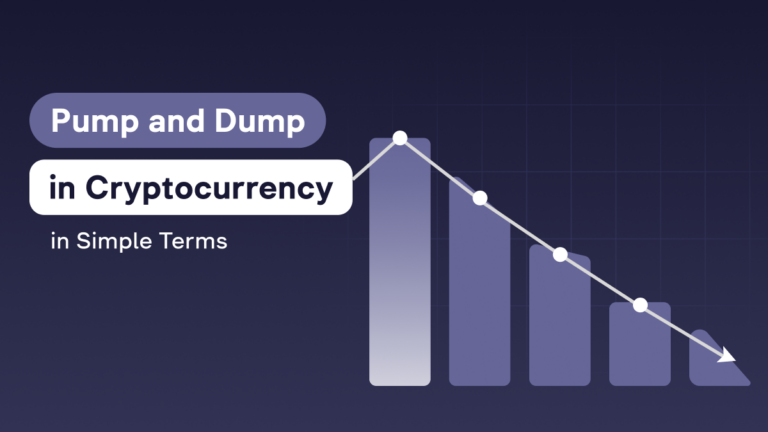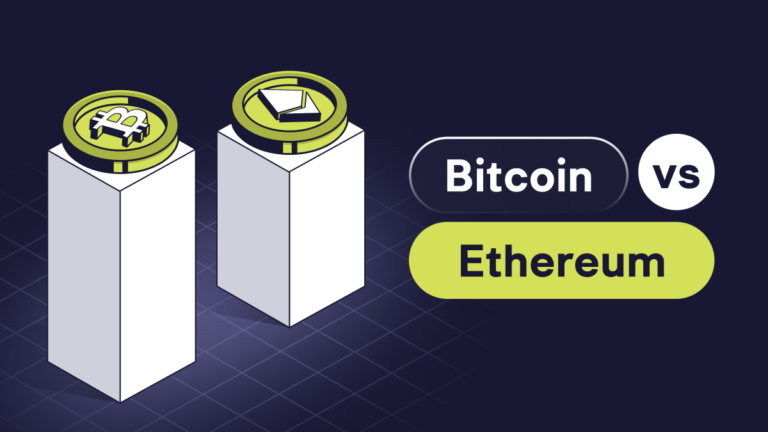What is a Crypto Liquidity Pool?

Content
In decentralized finance, new and innovative concepts are constantly emerging. One such revolutionary idea has been liquidity pools. They form the basis of many DeFi applications, allowing users to trade tokens without intermediaries and providing liquidity for decentralized exchanges. This article will look at a cryptocurrency liquidity pool, define what is a liquidity pool, and explain why it is essential for the modern cryptocurrency space.
What Are Liquidity Pools?
Liquidity pools are cryptocurrencies locked with smart contract. They facilitate trading on decentralized exchanges (DEX). Unlike traditional exchanges, where trading takes place between buyers and sellers, DEXs use liquidity pools to provide liquidity and execute orders. Defi pools are created and maintained by users who contribute their assets, receiving liquidity tokens in return. These tokens represent a share in the pool and can be used to earn fees for transactions that pass through the pool.
Automated market makers (AMMs) provide instant liquidity without intermediaries. They use algorithms to price assets within the DeFi pool based on their correlation. This approach reduces costs, simplifies the trading process, and makes financial transactions more transparent and accessible. Liquidity pools play a key role in the decentralized finance ecosystem, contributing to the growth of DeFi platforms and expanding opportunities for investors and trading enthusiasts.
History of Liquidity Pools
Crypto liquidity pool began to emerge with the development of DeFi. Centralized exchanges relied on order book and crypto market makers (MMs) to maintain liquidity, but as DeFi grew in popularity, there was a need for more efficient and decentralized solutions. Liquidity pools emerged as an innovative way to eliminate intermediaries and provide instant liquidity through AMMs.
The Importance of Crypto Liquidity Pools
Liquidity pools allow users to earn money on their assets by receiving transaction fees. This makes them attractive to investors, as participation in liquidity pools allows them to utilize their cryptocurrencies to generate passive income through commissions effectively. Also, liquidity pools contribute to the stability and liquidity of the market, which is an important factor for the healthy development of the DeFi ecosystem.
How Do Liquidity Pools Work?
The creation of a liquidity pool begins with a user depositing a pair of crypto assets of equal value in installments. These assets are locked into a smart contract, forming the basis for future trading operations.
Liquidity provider (LP) contribute cryptocurrency to the pools. Providers receive liquidity tokens that can be used to generate revenue from transaction fees in the pool. The larger the volume of liquidity contributed, the more reward an LP will receive. This way of earning money is called yield farming or liquidity mining.
AMMs use algorithms to determine the price of assets in the pool based on their quantity. The Constant Product Market Maker (CPMM) model is the most popular. According to this model, the product of the amount of two assets in the pool remains constant:
Token A × Token B = K
In which:
Token A: the value of Token A
Token B: the value of Token B
K: constant
Simply put, the ratio of tokens in the pool of liquidity determines their prices. When someone buys ETH in a WBT/ETH pair, the supply of ETH decreases, and the supply of WBT increases, causing the price of ETH and WBT. The impact of a transaction on prices depends on the volume relative to the size of the pool: the larger the pool, the smaller the impact of a small transaction. A liquidity provider can exit the pool anytime by exchanging its liquidity pool tokens for the assets initially deposited and the accrued interest income.
This means that the price of an asset changes depending on its relationship to another asset in the pool. In this way, AMM provides constant pricing and liquidity, allowing users to trade assets without the need for order books or centralized crypto market makers.
Types of Liquidity Pools
There are several DEX liquidity pools in the decentralized finance (DeFi) ecosystem, each with its characteristics and applicable to different scenarios. Here are some of them:
- Constant Ratio Liquidity Pools (Constant Product Pools): This type of pool, best known for the Uniswap protocol, maintains a continuous product between the number of two tokens in the pool.
- Fixed Ratio Liquidity Pools (Constant Sum Pools): This type of pool supports a fixed sum ratio between two tokens (for example, stablecoin or token with low volatility).
- Flexible Ratio Liquidity Pools (Variable Product Pools): Variable ratio pools allow you to customize the weight of each token in the pool. This can be useful for creating complex financial products and index funds. An example is Balancer, where users can create a pool with multiple tokens and customize their weight.
- Active Management Liquidity Pools (Active Management Pools): These pools are managed by professional managers or algorithms that actively monitor and rebalance the assets in the pool to maximize returns and minimize risk. Examples of such pools include Set Protocol-based funds.
- Liquidity pools with distributed rewards (Staking Pools): In such pools, users not only provide liquidity but also receive additional rewards in the form of tokens for staking.
- Flash Loan Liquidity Pools (Flash Loan Pools): These pools allow users to borrow instant loans without collateral if the loan is repaid in the same transaction. Examples of these pools can be found at Aave and dYdX.
Each type of liquid pools has advantages and disadvantages, and the choice of pool depends on the user’s goals, asset type, and desired level of risk.
Benefits of Liquidity Pools
- Users can create a liquidity pool and a new marketplace without reviews and approvals, decentralized and without intermediaries.
- The De-Fi ecosystem is accessible to large and small investors with no entry barrier.
- Promotes an inclusive and fair financial system by activating trading activity.
- DEXs are based on open-source smart contracts, providing transparency and accessibility to external audits.
- Leveraging advanced analytics can provide liquidity providers with valuable insights into pool performance and help optimize their strategies in the DeFi ecosystem.
Risks and Considerations in Liquidity Pools
Of course, there are some liquidity pool risks:
- The DeFi ecosystem still needs to mature.
- A narrow circle of participants can control liquidity pools and protocols, which contradicts the concept of decentralization.
- Hacking risks: vulnerabilities and bugs in the code can lead to hacking.
- Rug pull: the likelihood of fraudulent actions by pool creators.
- Significant slippage in low-liquidity markets.
- Risk of loss due to asset price fluctuations in the pool; sometimes, holding coins in a crypto wallet is more profitable.
Relying on a single liquidity pool can increase exposure to specific risks, highlighting the importance of diversification in DeFi investments.
Popular Liquidity Pool Providers
There are many liquidity providers in the world of decentralized finance. One is WhiteSwap, a decentralized exchange based on the Ethereum (ETH) blockchain. WhiteSwap was launched in 2020 as a fork of the Uniswap V2 protocol. It supports the Ethereum, Tron, and Polygon networks. WhiteSwap allows users to:
- Trade cryptocurrencies securely and transparently, without intermediaries.
- Earn on providing liquidity, receiving rewards in the form of tokens.
- Participate in farming, earning additional rewards.
- Steak WSD tokens to generate income.
- Participate in platform management through voting using WSD tokens.
WhiteSwap uses automated market makers to determine the value of assets based on their quantity in the DeFi liquidity pool.
Conclusions
A liquidity pool in cryptocurrency, in simple words, is a key element of decentralized finance (DeFi). It provides instant liquidity and reduces dependence on intermediaries. Liquidity pools allow users to earn passive income through transaction fees by contributing crypto assets to pools. The main benefits include decentralization, transparency, and accessibility to all levels of investors. However, there are risks, such as volatile losses and smart contract vulnerabilities. Impermanent loss is a significant concern for liquidity providers, as fluctuations in token prices can lead to a temporary reduction in the value of their assets. Understanding how liquidity pools work and their characteristics is essential for successful participation in DeFi. When contributing assets to liquidity pools, it is critical to secure your private keys to protect access to funds. Developing a robust strategy for managing liquidity pools can help mitigate risks and maximize returns in the DeFi market.
FAQ
DeFi liquidity pools are decentralized and operate without intermediaries, using smart contracts to automate trading and asset management.
Users can connect their cryptocurrency wallet and deposit assets into the liquidity pool.
Liquidity pools increase liquidity, reduce volatility and provide more stable and efficient markets.
AMM algorithm uses smart contracts to price and trade liquidity pools automatically.
Yes, participants should consider legal aspects such as taxation and regulation of financial services in their jurisdiction.











